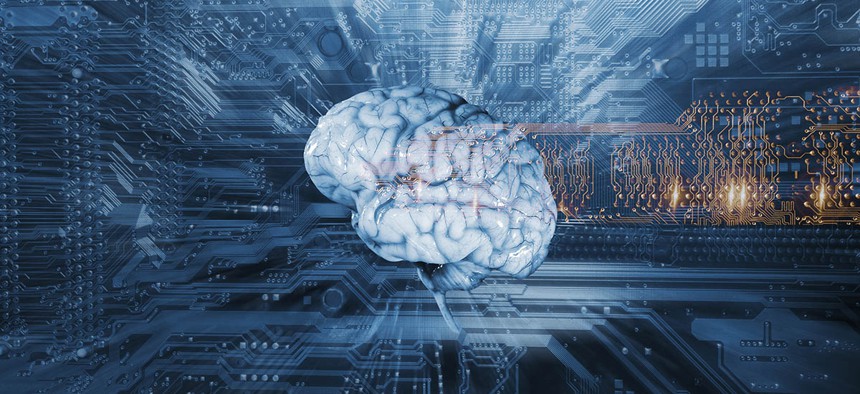DOD Officials: Use AI-Fueled Systems to Inform Policy-Makers, Not To Kill

Christian Lagerek/Shutterstock.com
Artificial intelligence is taking on a growing role in intelligence analysis in North Korea.
In the near future, artificial intelligence will combine government data from internet-connected sensors and decades-old paper-based records to inform decision- and policy-makers about key issues.
In the U.S. military, AI is already providing a glimpse of its capabilities and may offer a blueprint for its civilian potential.
Consider North Korea, a dangerous location for Americans, particularly for the intelligence community that relies on a combination of spies and satellites collecting communications and imagery.
» Get the best federal technology news and ideas delivered right to your inbox. Sign up here.
Yet, AI is taking on a growing role in detailing the happenings in North Korea, according to Ardisson Lyons, director of science and technology at the Defense Intelligence Agency.
“Some of the best breakthroughs we have on North Korea are AI-derived,” said Lyons, speaking Thursday at Defense One's Tech Summit. Defense One is one of Nextgov's sister publications.
AI is useful in sifting through hours of continuous video footage or satellite feeds and can detect nuanced differences in images humans might miss.
“It’s boring staring into monitors” all day, Lyons lamented, adding that humans—through fatigue or time or no fault of their own—are limited. Algorithm-fueled AI can scale to meet additional demand through tools like cloud computing or simply by adding more hardware capabilities.
The net result, Lyons said, is a more accurate intelligence picture packaged for decision-makers at a faster pace.
Handling the pace of data will be key for commanders on future battlefields, according to Dale Ormond, principal director of research for the Office of the Assistant Secretary of Defense. And AI will be commanders’ best friends.
AI can help “get inside adversaries’ decision-making” and help decision-makers “understand and recognize threats out there” faster than any human could. Ormond compared the Normandy invasion, which U.S. commanders had five years to plan, to the pace of technological change in today’s field of war.
“The rate of change [today] is tremendously fast,” Ormond said. “The amount of time a commander and his team have now is low.”
AI could assimilate sensor data, cybersecurity movements, the electromagnetic spectrum and a host of other data sets and combine them with other intelligence data in real-time to “provide a couple courses of action to a commander.”
Ormond said while AI should be used to inform decision-makers, he cautioned against allowing AI to actually make decisions, especially those involving human life.
“It is not our policy in the U.S. to delegate lethal authority to machines,” Ormond said. “I do not foresee we would give AI the ability to make decisions on executing lethal force. This is where commanders and their teams will have to rely on AI to run algorithms and give them courses of action.”



